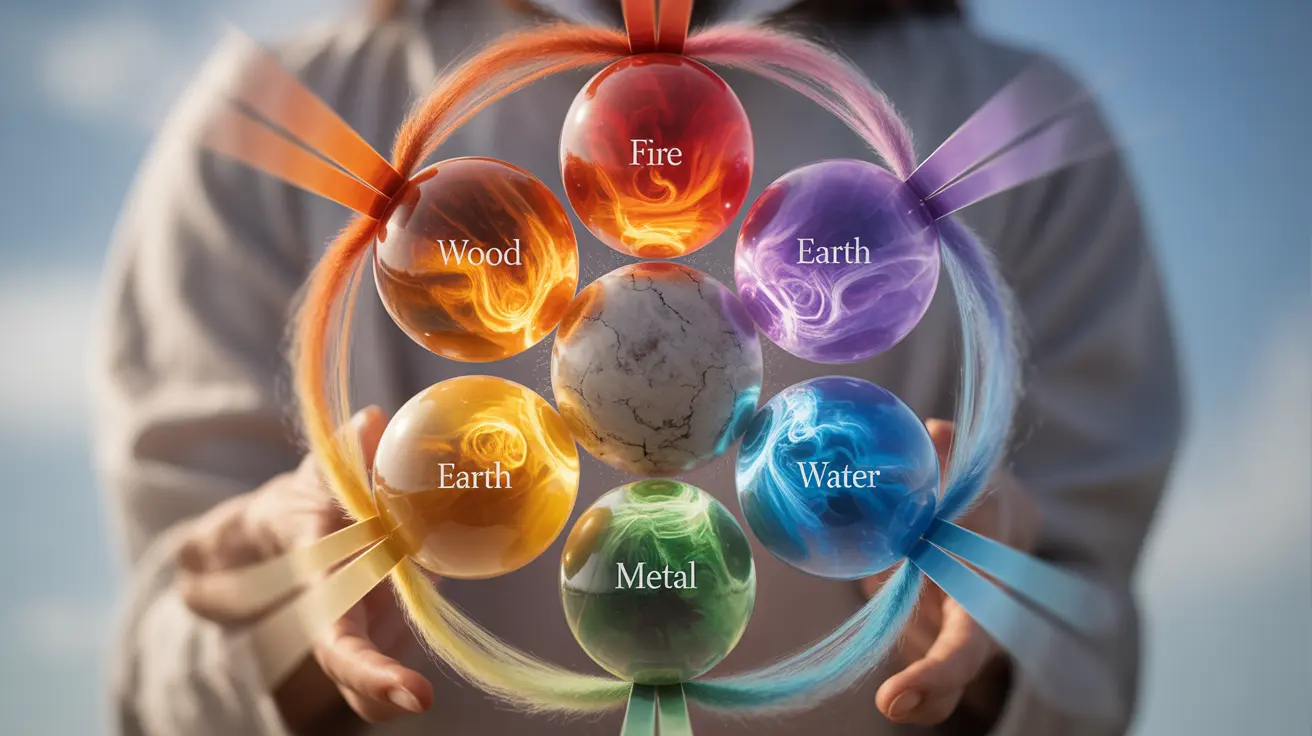Traditional Chinese Medicine (TCM) offers a profound understanding of health through the lens of the five elements: Wood, Fire, Earth, Metal, and Water. This ancient system provides valuable insights into how these natural forces influence our physical health, emotional well-being, and overall balance. Understanding the five elements can help us make informed choices about our health and lifestyle.
In this comprehensive guide, we'll explore how the five elements interact with our bodies and minds, their role in diagnosis and treatment, and practical ways to apply this wisdom for better health.
Understanding the Five Elements and Their Health Associations
Each element in Traditional Chinese Medicine corresponds to specific organs, emotions, and physical manifestations in the body:
Wood Element
The Wood element relates to the liver and gallbladder. It governs growth, flexibility, and planning. When balanced, it promotes clear thinking and emotional stability. Physical signs of Wood imbalance may include headaches, irritability, and digestive issues.
Fire Element
Associated with the heart and small intestine, the Fire element influences joy, emotional expression, and circulation. A balanced Fire element supports healthy relationships and mental clarity, while imbalances can manifest as anxiety or sleep disturbances.
Earth Element
The Earth element connects to the stomach and spleen. It represents nourishment, stability, and centeredness. When in harmony, it promotes good digestion and emotional grounding. Imbalances may lead to worry, fatigue, and digestive problems.
Metal Element
Linked to the lungs and large intestine, the Metal element governs inspiration, boundaries, and letting go. Balance here supports respiratory health and emotional processing, while imbalances can affect breathing and immunity.
Water Element
The Water element relates to the kidneys and bladder. It influences wisdom, willpower, and fear. Balanced Water energy supports vitality and confidence, while imbalances may manifest as anxiety or urinary issues.
The Interaction of Elements in Health and Disease
The five elements work together in two important cycles:
- The Nourishing Cycle: Each element supports and feeds the next
- The Controlling Cycle: Elements keep each other in check through natural restraint
Understanding these relationships helps practitioners identify the root causes of health issues and determine appropriate treatments.
Practical Applications of Five Element Theory
Traditional Chinese Medicine practitioners use the five elements to:
- Diagnose conditions by observing element-related symptoms
- Choose appropriate acupuncture points and herbs
- Recommend dietary adjustments based on elemental properties
- Suggest lifestyle modifications to restore balance
This holistic approach considers not just physical symptoms but also emotional and environmental factors affecting health.
Lifestyle Recommendations Based on the Five Elements
To maintain balance across all elements, consider these practices:
- Regular exercise that includes both movement and stillness
- Mindful eating with attention to seasonal foods
- Emotional awareness and stress management
- Adequate rest and sleep
- Connection with nature and natural cycles
Frequently Asked Questions
What are the five elements in Traditional Chinese Medicine and how do they relate to health?
The five elements in TCM are Wood, Fire, Earth, Metal, and Water. Each element corresponds to specific organs, emotions, and bodily functions. They provide a framework for understanding how different aspects of health are interconnected and influence overall well-being.
How does the balance or imbalance of the five elements affect physical and emotional well-being?
Balance among the elements promotes optimal health, while imbalances can lead to physical and emotional symptoms. For example, excess Fire might cause anxiety and sleep problems, while deficient Earth energy could result in digestive issues and worry.
What role do the five elements play in diagnosing and treating health conditions in Traditional Chinese Medicine?
Practitioners use the five elements to identify patterns of disharmony, select appropriate treatment methods, and restore balance. This includes choosing specific acupuncture points, herbs, and therapeutic techniques that correspond to the affected elements.
How can lifestyle changes and therapies based on the five elements improve overall wellness?
Lifestyle modifications aligned with the five elements can support better health. This might include dietary changes, exercise routines, emotional practices, and environmental adjustments that strengthen deficient elements or calm excessive ones.
What are the relationships and cycles between the five elements and why are they important for health?
The elements interact through the Nourishing Cycle (where each element supports the next) and the Controlling Cycle (where elements keep each other in check). Understanding these relationships helps practitioners maintain balance and treat health conditions effectively.




